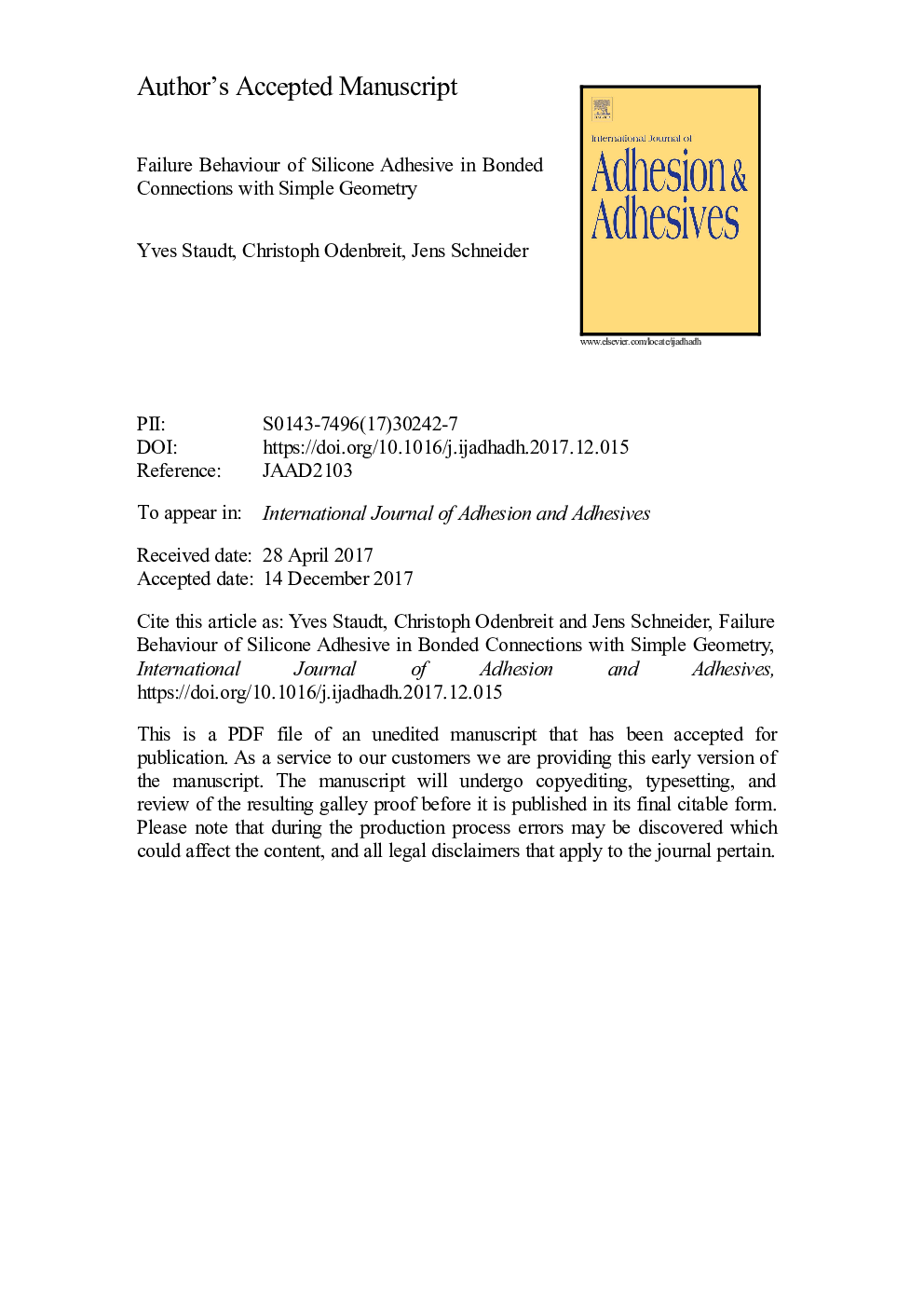| Article ID | Journal | Published Year | Pages | File Type |
|---|---|---|---|---|
| 7170975 | International Journal of Adhesion and Adhesives | 2018 | 30 Pages |
Abstract
In façade structures, adhesively bonded connections between glass panels and metallic substructures represent an attractive alternative to mechanical fixation devices. Apart from positive aspects regarding the construction's energy efficiency and aesthetics, the uniform load transfer reduces stress concentrations in the adherends, which is beneficial especially regarding brittle materials like glass. Structural silicone sealants are generally used for these kind of applications due to their excellent adhesion on glass and their exceptional resistance against environmental influences and ageing. For the verification of the bonded connection, non-linear numerical simulations, such as the Finite Element Method, are increasingly used. The resulting three-dimensional stress states need to be assessed with the help of an appropriate failure criterion. In this paper, an overview is given on available failure criteria for rubber-like materials. The applicability of these criteria on the silicone sealant is verified regarding three characteristic stress states: uniaxial tension, shear and compression. The proposed engineering failure criterion is the true strain magnitude, which is valid for bonded connections in form of linear beads for cohesive failure of the adhesive. For Dow Corning® 993 structural silicone sealant, the strain magnitude, evaluated using true strains, at failure could be determined as 1.6.
Keywords
Related Topics
Physical Sciences and Engineering
Engineering
Mechanical Engineering
Authors
Yves Staudt, Christoph Odenbreit, Jens Schneider,
